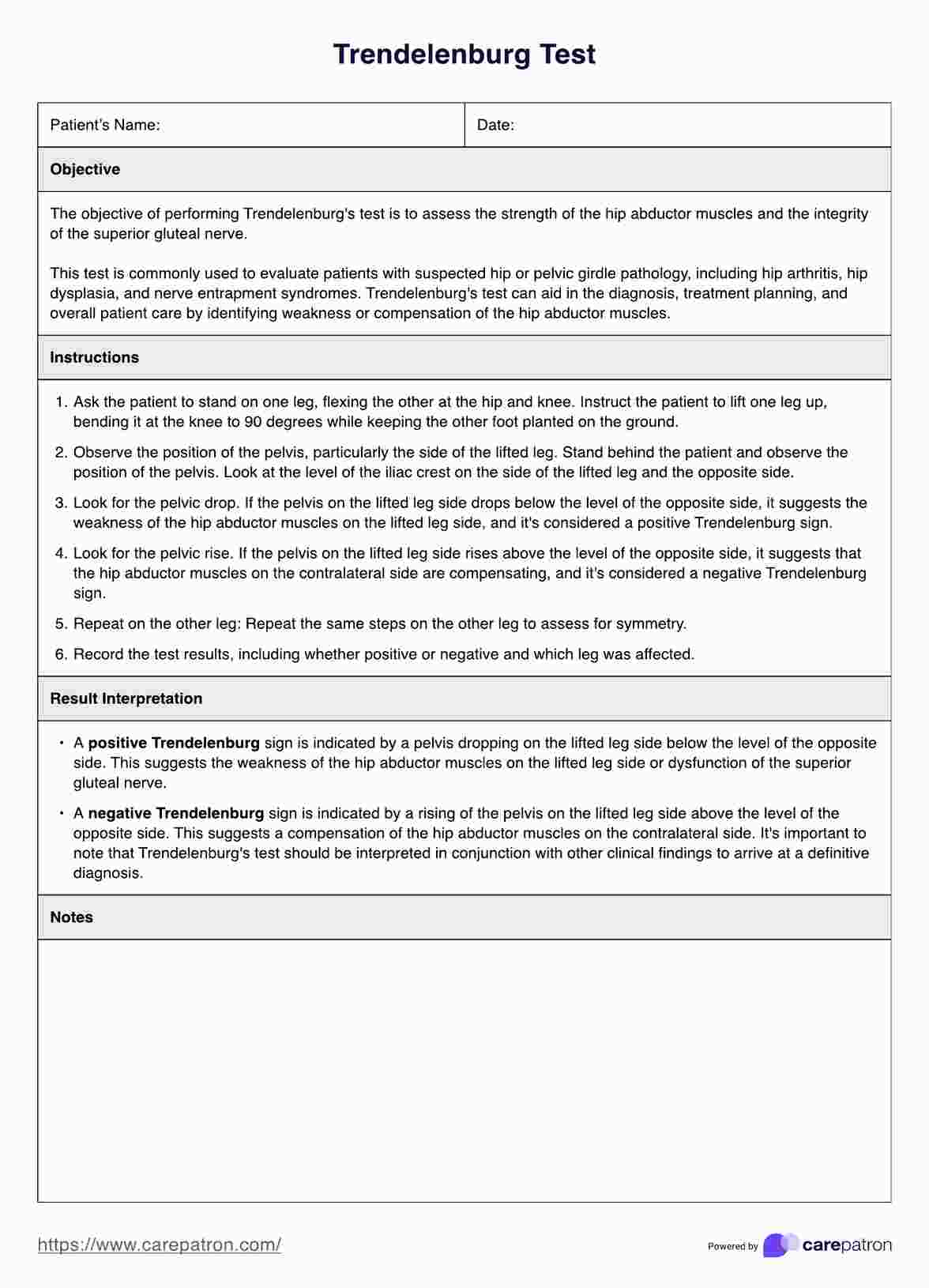The Trendelenburg Test was named after German surgeon Friedrich Trendelenburg, who first described it in 1895.

Trendelenburg Test
Learn everything you need to know about the Trendelenburg Test, including how to perform it, score it, and interpret the results. Download our free guide now.
Trendelenburg Test Template
Commonly asked questions
To use the Trendelenburg Test hip, follow the instructions provided in our guide. It involves asking the patient to stand on one leg while observing the position of the pelvis and looking for a pelvic drop or rise.
The Trendelenburg Test is used to test for weakness or compensation of the hip abductor muscles and the integrity of the superior gluteal nerve. It can identify conditions such as hip arthritis, hip dysplasia, and nerve entrapment syndromes.
EHR and practice management software
Get started for free
*No credit card required
Free
$0/usd
Unlimited clients
Telehealth
1GB of storage
Client portal text
Automated billing and online payments











